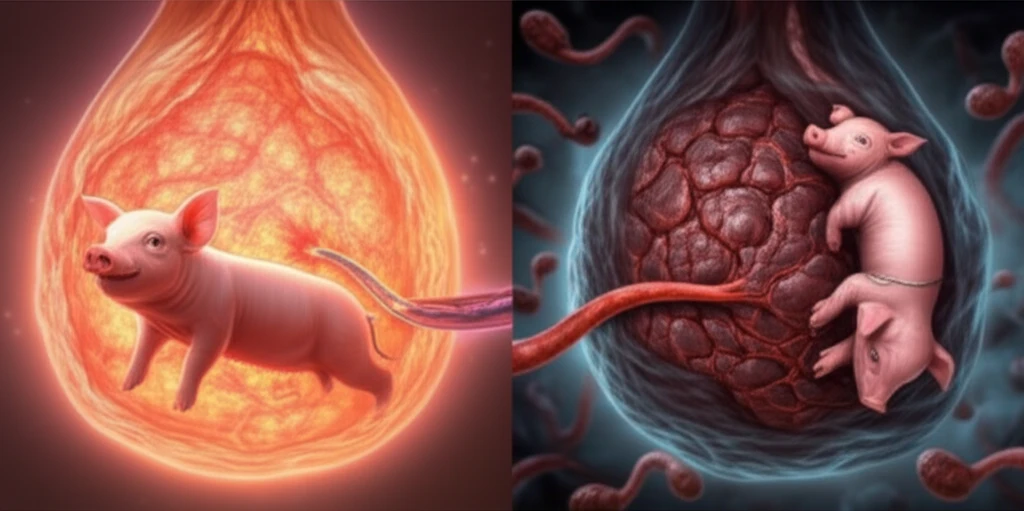
Unlocking Pig Health: How Stress in Pregnancy Affects Piglet Development
"Discover the critical role of placental health and the impact of oxidative stress on piglet growth, offering insights for improved breeding and care."
For pig farmers, ensuring every piglet gets off to a healthy start is crucial. Intrauterine growth restriction (IUGR), where piglets don't grow properly in the womb, affects many litters, leading to weaker animals and economic losses. Understanding what causes IUGR is essential for improving pig health and farm profitability.
A recent study has shed light on how stress during pregnancy impacts the placenta, the vital organ that nourishes developing piglets. Researchers focused on oxidative stress, a condition where harmful molecules called reactive oxygen species (ROS) overwhelm the placenta, causing damage. They explored how this stress affects the placenta's function, particularly its energy production and cell growth processes.
The study looked at key factors such as mitochondrial content, cell cycle progression, and specific protein pathways in the placentas of piglets with and without IUGR. By understanding these mechanisms, breeders can develop better strategies to minimize stress during pregnancy and promote healthier piglet development.
Decoding Oxidative Stress: What It Means for Piglet Development

Oxidative stress occurs when there's an imbalance between free radicals and antioxidants in the body. In the context of pig pregnancy, this imbalance can harm the placenta, disrupting its ability to provide essential nutrients and support the developing fetus. High levels of ROS can damage placental cells, reduce blood flow, and impair the transfer of nutrients, all contributing to IUGR.
- Increased ROS Production: Piglets with IUGR showed higher levels of ROS in their placentas, indicating significant oxidative stress.
- Lipid Peroxidation and DNA Damage: The harmful effects of ROS led to damage of fats and DNA within placental cells.
- Reduced Mitochondrial Function: The powerhouses of the cells, mitochondria, were compromised, leading to decreased energy production.
- Cell Cycle Disruption: Normal cell growth was hindered, contributing to smaller, less developed piglets.
Practical Steps for Pig Farmers: Reducing Stress and Enhancing Piglet Health
While the study provides valuable insights into the mechanisms of IUGR, it also opens doors for practical interventions. Farmers can focus on minimizing stress factors during pregnancy through proper nutrition, environmental management, and health monitoring. Supplementing the sow's diet with antioxidants, ensuring a clean and comfortable environment, and promptly addressing any health issues can collectively reduce oxidative stress and promote healthier piglet development. By understanding the science behind piglet health, farmers can take proactive steps to improve their breeding outcomes and enhance the well-being of their animals.
